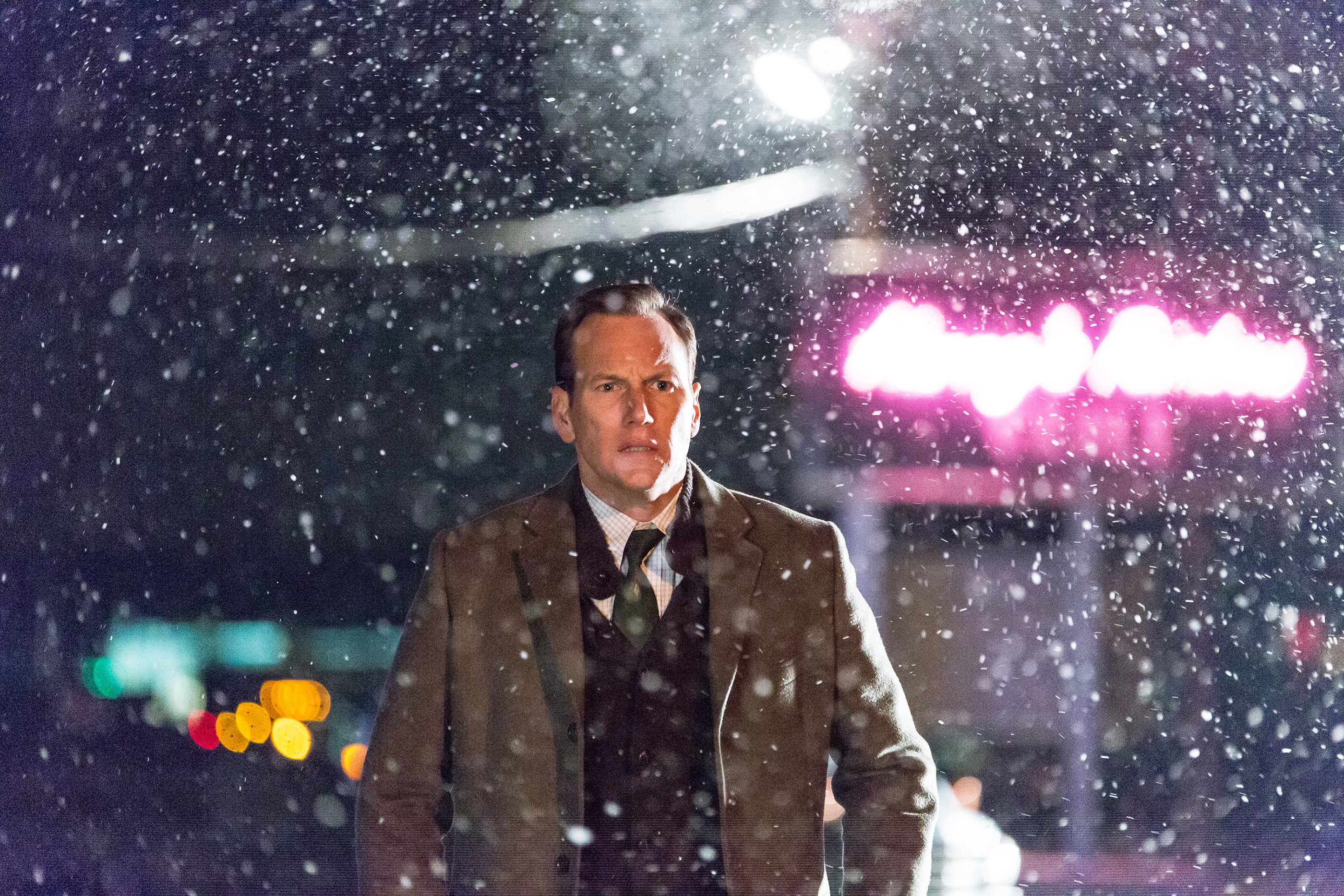At first glance, this melodramatic noir is a gorgeous period picture, echoing the vintage visuals of Tom Ford’s “A Single Man” and Todd Haynes’ “Far From Heaven” and “Carol.” Given this movie’s origins as a Patricia Highsmith novel like Haynes’ most recent work, that early impression initially seems merited. Unfortunately, as “A Kind of Murder” progresses, it becomes clear that it resembles those films in look only. The fine cinematography, set design and costumes only serve as a distraction from the sparsely drawn story and uninteresting characters.
With “Elizabeth Taylor in ‘Butterfield 8’” on a theater marquee and ’60s dresses to die for, “A Kind of Murder” immediately establishes its setting in its opening scene, before it dives into parallel storylines. On one side, Newark bookstore owner Kimmel (Eddie Marsan) is grieving the loss of his wife after her murder, and he’s the prime suspect in the investigation led by Detective Corby (Vincent Kartheiser). Meanwhile, New York architect and part-time mystery writer Walter Stackhouse (Patrick Wilson) wishes his troubled wife Clara (Jessica Biel) would disappear. “What’s the difference between wishing someone dead and actually doing it?” he wonders. His desire to see her gone escalates when he meets the lovely Ellie (Haley Bennett).
 Directed by Andy Goddard, “A Kind of Murder” eventually sees its separate plots dovetail, but it jumps awkwardly from scene to scene, sometimes skipping information that feels pertinent. Running a slim 96 minutes, the film feels trimmed down, with some of the important story beats edited out. Not everything needs to be spelled out for the audience, but the flow here feels choppy, as though you fell asleep and missed crucial bits of information or even whole scenes. The script from first-time screenwriter Susan Boyd seems to provide only a bare sketch of the story, and while the film has a chilling concept with a similar feel to “Strangers On A Train,” it never fulfills on the promise of its premise.
Directed by Andy Goddard, “A Kind of Murder” eventually sees its separate plots dovetail, but it jumps awkwardly from scene to scene, sometimes skipping information that feels pertinent. Running a slim 96 minutes, the film feels trimmed down, with some of the important story beats edited out. Not everything needs to be spelled out for the audience, but the flow here feels choppy, as though you fell asleep and missed crucial bits of information or even whole scenes. The script from first-time screenwriter Susan Boyd seems to provide only a bare sketch of the story, and while the film has a chilling concept with a similar feel to “Strangers On A Train,” it never fulfills on the promise of its premise.
“A Kind of Murder” lacks a single sympathetic character or even one that’s interesting in their flaws. The closest we come is with Ellie, who seems unaware of what she’s gotten herself into. Even Kartheiser’s cop is impossible to root for; he’s smug, dumb and abusive. And while Wilson is charming at times, his character certainly earns the original name of Highsmith’s book, “The Blunderer.” He makes terrible decisions for equally terrible reasons, with each wrong move putting him into deeper jeopardy.
 From its opening moments, “A Kind of Murder” captures the period nicely with vibrant primary colors playing well off each other. Varying shades are used with intention, whether it’s the bright reds of Clara’s dress and bedroom or the layers of blue in Walter’s car, his shirt and the door frame, all in a single shot. Coupled with the efforts of costume designer Sarah Mae Burton and production designer Pete Zumba, the cinematography from DP Chris Seager is the highlight of the film, providing a number of artful individual frames.
From its opening moments, “A Kind of Murder” captures the period nicely with vibrant primary colors playing well off each other. Varying shades are used with intention, whether it’s the bright reds of Clara’s dress and bedroom or the layers of blue in Walter’s car, his shirt and the door frame, all in a single shot. Coupled with the efforts of costume designer Sarah Mae Burton and production designer Pete Zumba, the cinematography from DP Chris Seager is the highlight of the film, providing a number of artful individual frames.
However, the performances are all over the place, with some of the actors seeming to be in a totally different movie than their peers. Wilson’s old Hollywood good looks fit the setting, but his Walter leans toward monotony. As his depressed wife, Biel’s intentional flatness works within her character’s emotional range, but it doesn’t make for enjoyable viewing. Meanwhile, Kartheiser seems to have fun with his smarmy detective who can’t understand why no one else suspects Walter for murder. Only Marsan’s restrained performance as the fidgety and tightly wound Kimmel fits perfectly in the middle.

“A Kind of Murder” attempts to distinguish itself in its approach to style, but leaves much to be desired in its story and character. It lacks a compelling, well-developed mystery as well as any level of suspense that could classify it as a thriller. Highsmith fans will be disappointed as the gorgeous visuals make it a far better coffee-table book than a feature-length film. [C-]
This is a reprint of our review from the 2016 Tribeca Film Festival.





